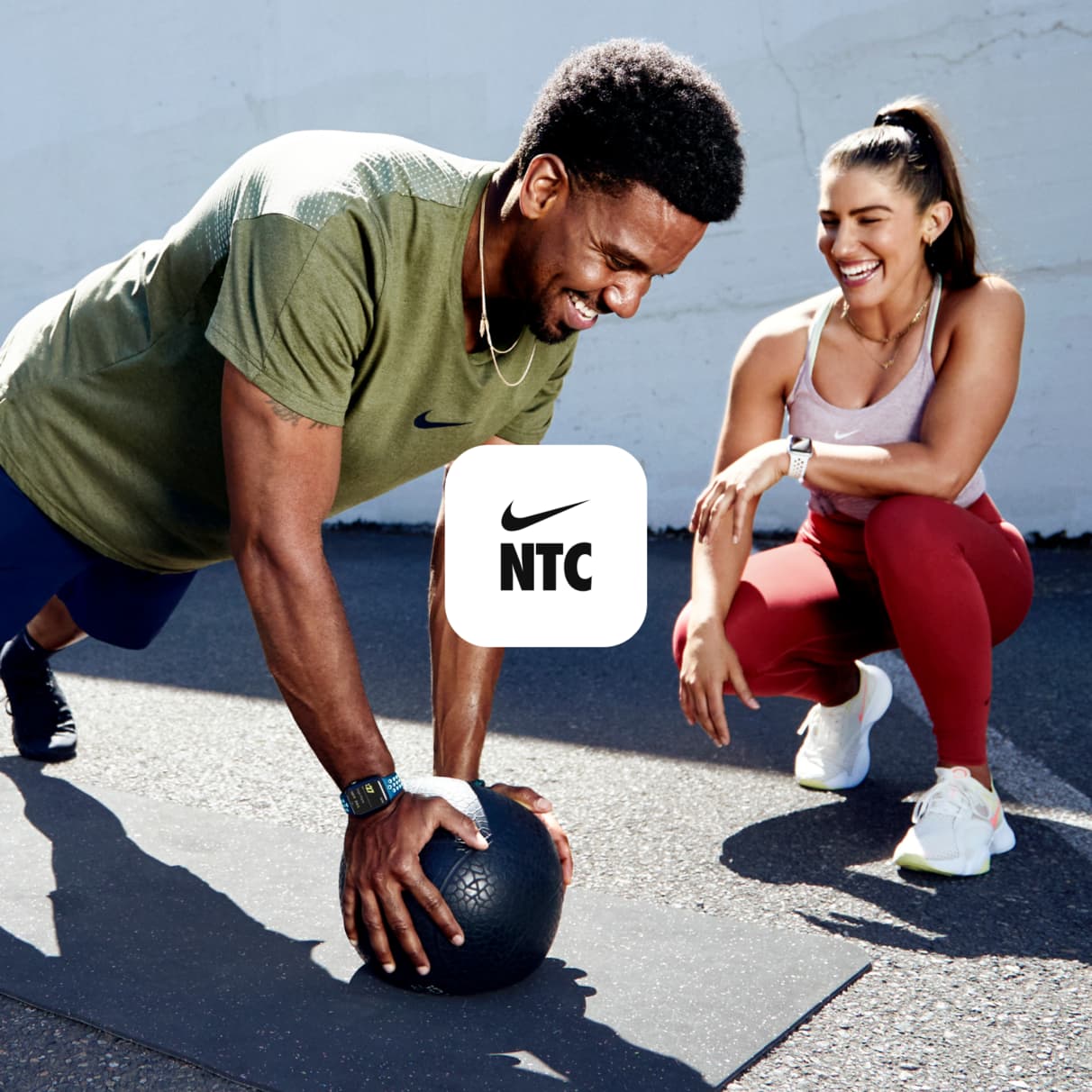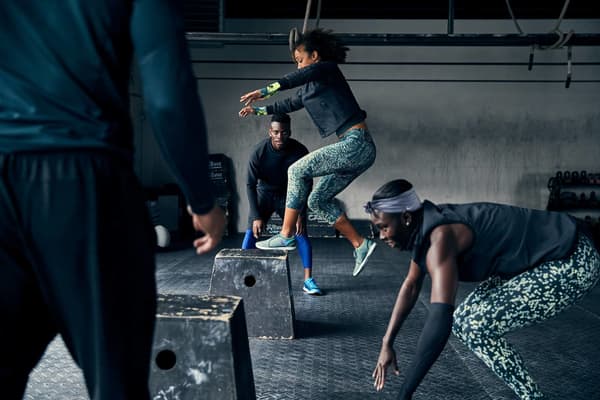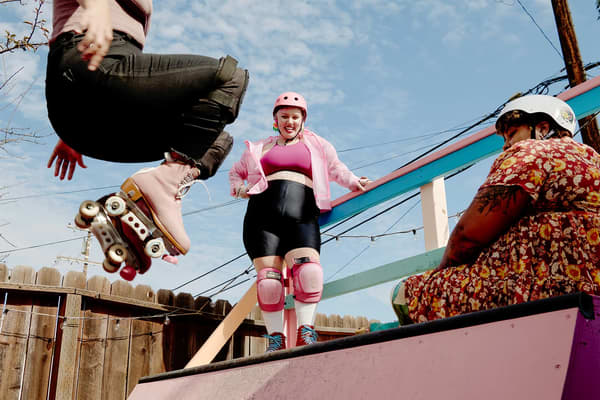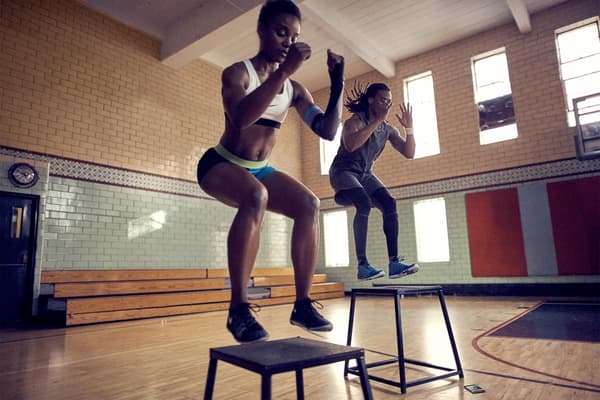How to Do Crunches Properly
Sports & Activity
Crunches are a go-to choice for any ab workout. But what’s your form like? Avoid these common mistakes when doing the most popular core exercise.
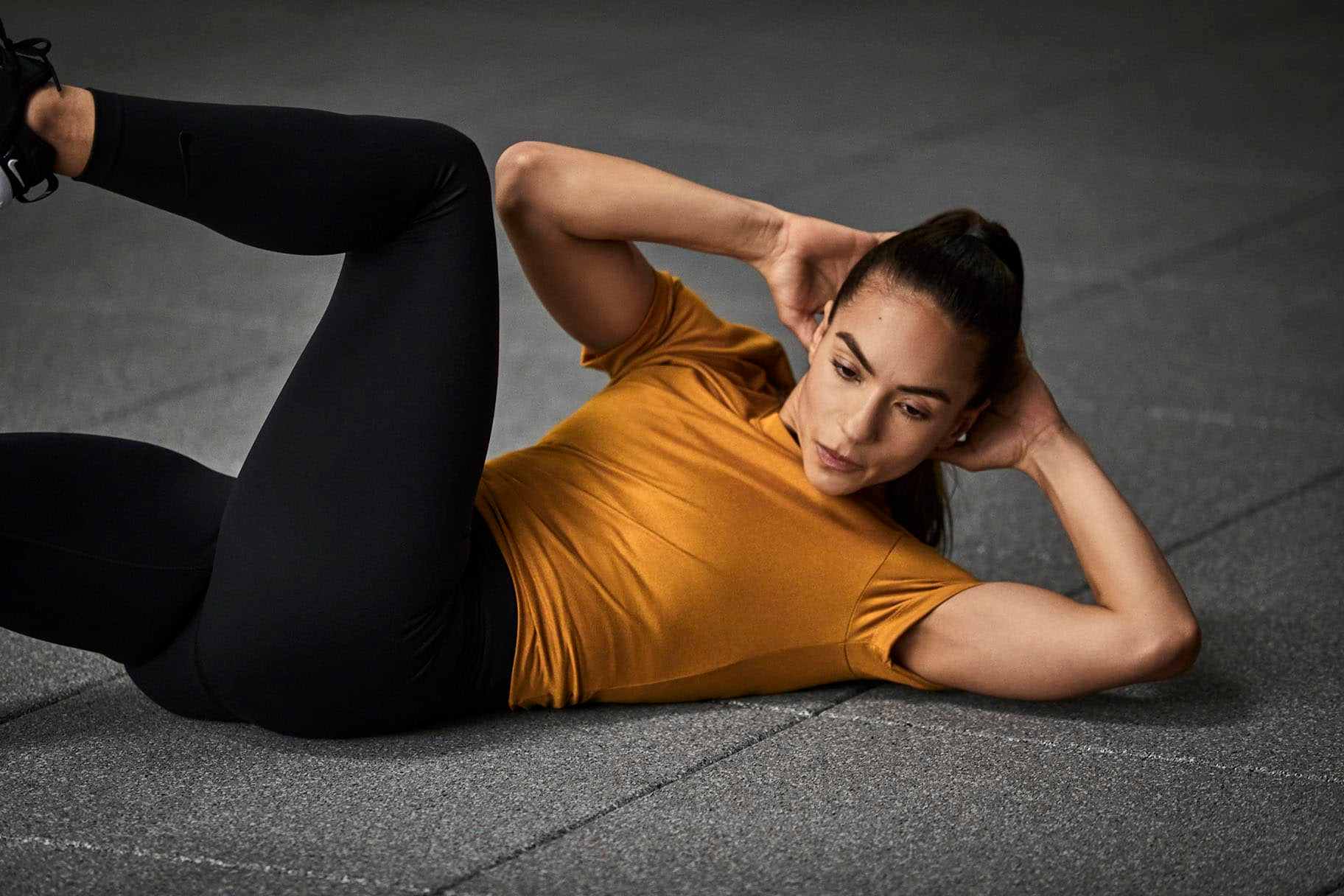
The common mistakes that people make with crunches can destroy their effectiveness. So, if you’re going rep for rep without feeling the burn or seeing fitness results, you might need to correct your form. To get the most out of crunches, it’s helpful to understand some of the biomechanics. This will help you activate and contract the abdominal muscles to set you up for success.
What Muscles Do Crunches Work?
Whether you’re doing bicycle crunches or oblique crunches, your entire abdominal muscles should be getting fired up — specifically, the rectus abdominis muscle and the obliques. This makes crunches an excellent exercise for strengthening your core, which transfers into strength and stability for other exercises such as deadlifts.
What Are the Benefits of Crunches?
Crunches are a bodyweight exercise that can be done anywhere, by anyone from beginners to experienced athletes. That’s why they’re the staple of any ab routine and perfect for at-home fitness workouts.
Aside from their practicality, crunches are a hugely effective abdominal exercise. They primarily help you build muscle in the abdomen. Crunches are an isolation exercise, which means they target and isolate the abs, helping you to enhance your mind-muscle connection.
This transfers into other exercises and sports. When you learn how to connect to and contract your abs, you also improve core activation in other exercises. For example, during a barbell squat, your core is fired up, working to keep the barbell stable in both the concentric and eccentric phase. A weak core impacts your ability to perform exercises effectively. Weak core muscles also leave you susceptible to poor posture, injuries and low back pain.
But as with all exercises, if your form isn’t right, you’re not going to be getting the results you deserve. You might even be targeting unintended muscles and causing imbalances or risking injury. Here’s how to perform crunches properly.
How to Do Crunches Properly
There are many different crunch variations. First, let’s start with the original crunch.
- Lie down on the floor with knees bent and feet planted hip-width apart.
- Place your hands crossing over your chest OR with elbows out wide with your hands behind your head, with fingers grazing your ears.
- Relax your shoulders and keep your gaze neutral and tuck your chin slightly toward your chest.
- Inhale, drawing your abdomen in toward your spine.
- Exhale and lift your head, neck and shoulder blades off the floor, curling inward.
- Inhale and slowly return to the start position.
How to Do Popular Crunch Variations
1.Reverse Crunch
This popular variation works your rectus abdominis and external obliques, predominantly in the lower abdominal region.
- Lie down on the floor with knees bent and feet planted hip-width apart.
- Place your hands on the floor by your side.
- Inhale, contract your abs toward your spine.
- Exhale and lift your feet off the floor and raise your knees upward and inward toward your chest, keeping your knees at a 90 degree angle. Your hips should tilt inward to crunch your abs.
- Slowly lower your feet to the floor.
2.Bicycle Crunch
A bicycle crunch fires up your transversus abdominis, the deepest of the abdominal muscles. This is considered one of the key muscles to prevent back pain.
- Lie down on the floor with knees bent and feet planted hip-width apart.
- Place your hands gently on your head with elbows out wide, with fingers grazing your ears.
- Lift one leg off the ground and straighten it outward, raising the opposite knee upward toward your chest.
- Lift your chest upward and turn your torso — opposite elbow to opposite knee.
- Lower back to a neutral position with knees raised.
- Switch to the other side — opposite elbow and opposite knee.
3.Medicine Ball Crunch
A medicine ball variation can increase the intensity of a traditional crunch and fire up your obliques.
- Sit on the floor and raise your feet off the floor. Straighten your legs with a slight bend in the knee.
- Hold your medicine ball in front of your hips and lean back to a 45 degree angle.
- Move the ball from the left-right, twisting your torso and contracting your obliques.

Common Mistakes People Make When Doing Crunches
1.Performing Too Quickly
The slower and more controlled you perform crunches, the better ab activation you’ll get. That’s because you’re increasing the time under tension. A single crunch should last a few seconds, performed in a controlled manner. Aim for around two second in the concentric phase (when you lift shoulders up) and two seconds in the eccentric phase (when you lower).
2.Straining the Neck
A common complaint from crunches is neck pain. This is a sign you’re not practicing proper form. Avoid neck pain by keeping your gaze ahead and neutral and tucking your chin toward your chest. This position reduces the activation of the hyoid muscles, which are the stabilizing muscles that run from your chin to your collarbone. You want to be putting the responsibility of stabilization back into the abdominals.
3.Coming Up Too High
Remember, crunches are not sit-ups! You don’t want to lift your entire upper body when coming up. This is a small movement. In fact, the smaller the movement, the more difficult it becomes as you don’t build up momentum. Aim to raise your shoulder blades just a few inches from the ground.
4.Curl and Lift
The concentric phase of a crunch has two parts: you want to curl and lift your shoulders from the ground to come up. If you just curl your shoulders, you’re not getting the elevation and you won’t target your abdomen fully. If you struggle to feel the burn when you crunch, this might be your issue. Visualize bringing your ribs to your pelvis on the exhale as you curl and lift upward.
5.Obsessing Over Arm Position
Here’s the truth: Your arms have nothing to do with crunches. Crunches are an abdominal isolation exercise. Your arms can be in any position you choose — whether that’s across your body, out to the side or tilting inward. Choose a position that is comfortable for you and that allows you to focus on the mind-muscle connection with your abs, not your arms.
